EASTER IN SPAIN
Easter is a very important celebration in Spain. The whole of Holy Week is often a holiday. A lot of Spanish Catholics fast on Ash Wednesday and Good Friday.
On Ash Wednesday, people have a cross made of ash put on their foreheads. This is a way of saying sorry to God.
On Palm Sunday, most people go to mass in the morning. Children bring palm leaves and branches to be blessed by the priest. Sometimes the branches decorated with sweets, tinsel or have other decorations hanging from them.
On Maundy Thursday, there is a special 'Dance of Death' celebration in Verges, Gerona. A scary dance is performed, at night, by men dressed as skeletons.
Many towns and cities in Spain celebrate Easter with processions through the streets at night. Floats called 'tronos' are carried through the street. Each float has incredible decorated figures representing part of the Easter story on it. The floats and statues are often covered in gold, silver and fine cloths. They are also decorated with lots of fresh flowers. Forty or fifty people carry each trono on their shoulders on the procession, which can sometimes last between four or five hours!
Holy Week in Castile and León
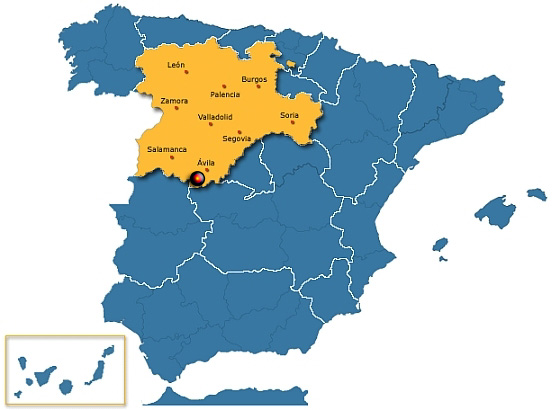
Valladolid
Easter in Valladolid holds ("Semana Santa" in Spanish) is one of the best known Catholic traditions in Valladolid. As a reflection of its importance, is also considered as a Fiesta of International Tourist Interest of Spain since 1981. The Good Friday processions are considered an exquisite and rich display of Castilian religious sculpture. On this day, in the morning, members of the brotherhoods on horseback make a poetic proclamation throughout the city. The "Sermon of the Seven Words" is spoken in Plaza Mayor Square. In the afternoon, thousands of people take part in the Passion Procession, comprising 31 pasos (religious statues), most of which date from the 16th and 17th centuries, by artists like Juan de Juni or Gregorio Fernández. The last statue in the procession is the Virgen de las Angustias, and her return to the church is one of the most emotional moments of the celebrations, with the Salve Popular sung in her honour.
Easter is one of the most spectacular and emotional fiestas in Valladolid. Religious devotion, art, colour and music combine in acts to commemorate the death of Jesus Christ: the processions. Members of the different Easter brotherhoods, dressed in their characteristic robes, parade through the streets carrying religious statues (pasos) to the sound of drums and music.
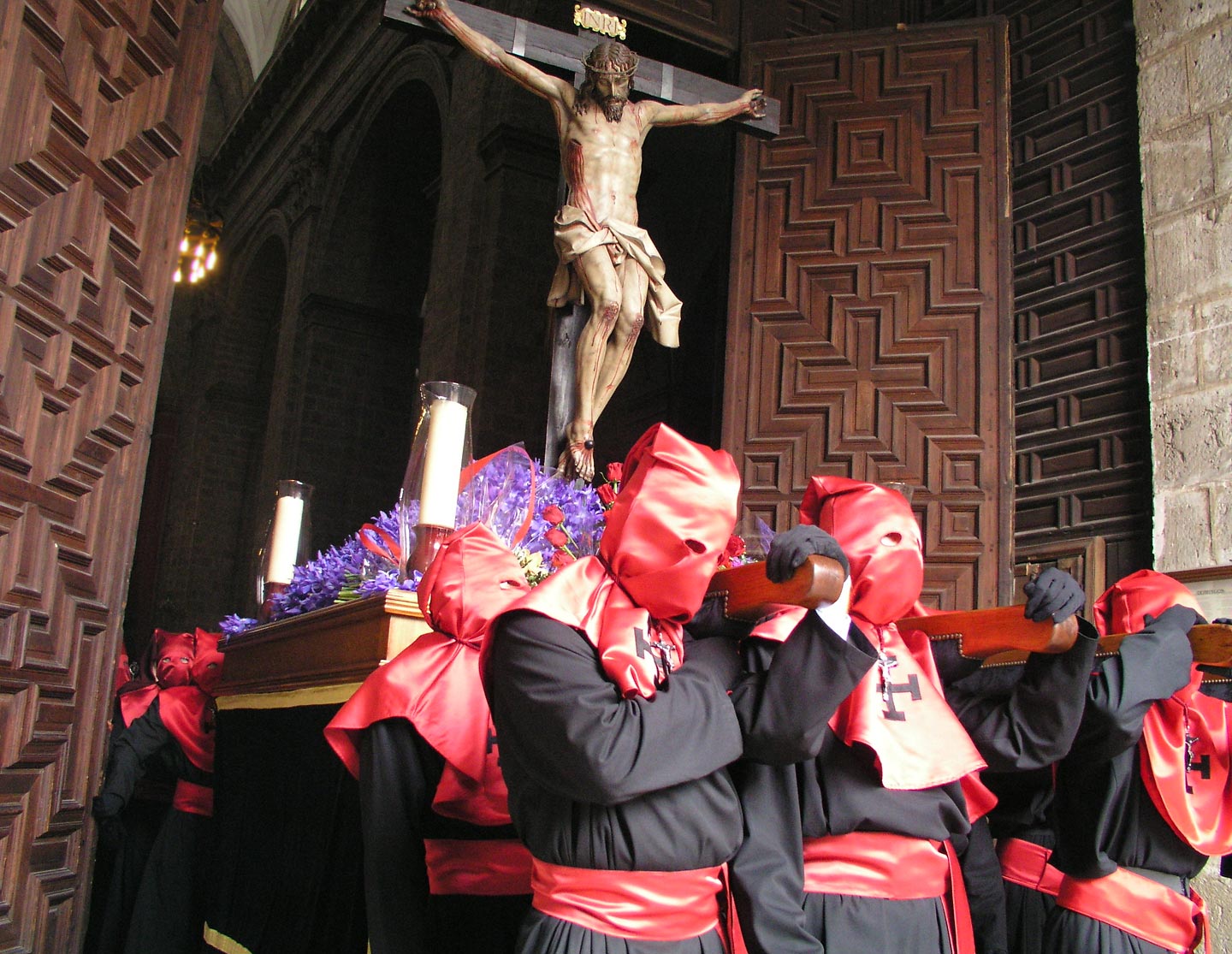
León
Holy Week processions in León are also very popular, with more than 15,000 penitents (called papones, in Leonese language) on the streets. Processions begin on "Viernes de Dolores" (the Friday in the week before Holy Week) and last until Easter Sunday. The most solemn and famous procession is the "Procesion de los Pasos", also known as the "Procesion del Encuentro" (Procession of the Meeting). During this nine-hour marathon procession, about 4,000 penitents carry 13 "pasos" around all the city. The most solemn moment is El Encuentro (The Meeting) when the pasos representing Saint John and La Dolorosa face one to the other and are "bailados" (penitents move the paso as if Saint John and La Dolorosa were dancing).
Also famous is a secular procession, called Entierro de San Genarín, the "Burial of Saint Genarín". The procession consists of a march through the city bearing Orujo at the head of the procession; at the spot by the face of the city walls where the man was run over a bottle of Orujo and two oranges are left in commemoration.
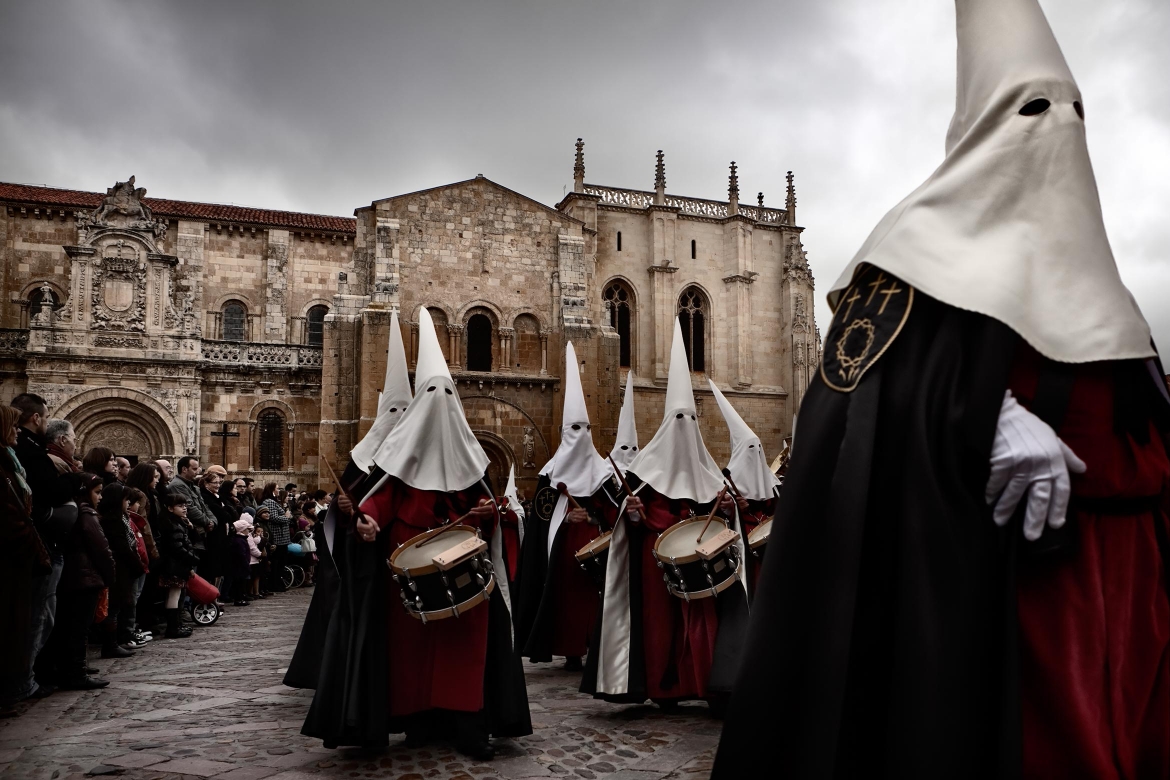
Salamanca
Salamanca has one of the oldest celebrations in Spain. The earliest penance processions can be traced back to 1240. Three are the characteristics that make Holy Week in Salamanca unique: The monumental background provided by the Old City, declared UNESCO World Heritage Site in 1988, the quality of the images and pasos, created by important Spanish artist such as Luis Salvador Carmona or Mariano Benlliure and the links with the University of Salamanca, the oldest institution of its kind in the country.
10,000 penitents associated to 16 brotherhoods organize 22 processions that walk the streets of the center carrying 41 pasos from Friday of Sorrows to Easter Sunday.
Semana Santa in Salamanca was declared Fiesta of International Tourist Interest of Spain in 2003.
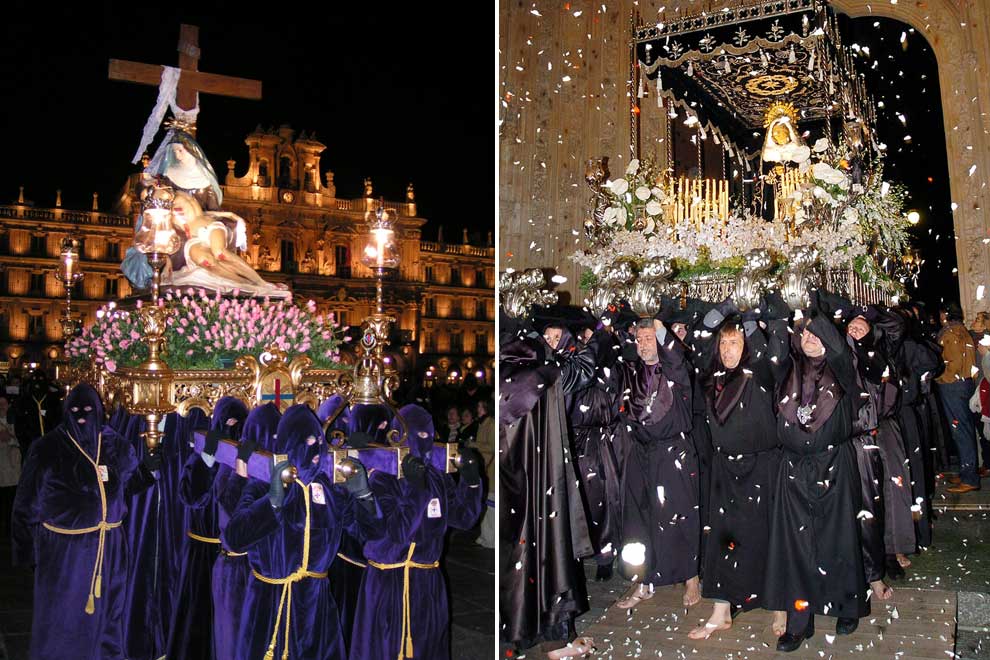
Zamora
Zamora has the oldest celebrations in Spain. The earliest penance processions can be traced back to 1179. Holy Week in Zamora is celebrated by 16 brotherhoods and fraternities that perform 17 penance processions on the streets of the old city. Thousands of penitents walk the streets while the processions are attended by a crowd of locals and visitors. Zamora incresases its population 5 times, up to 300.000 people during the festival.
The singularities of this celebration include the medieval set up of some of the parades where the brotherhoods use monk´s robes instead of the most usual nazareno´s conical hat, torch fire instead of candles or male choirs instead of marching bands.
Semana Santa in Zamoora was declared Fiesta of International Tourist Interest of Spain in 1986.
Holy Week in Andalusia
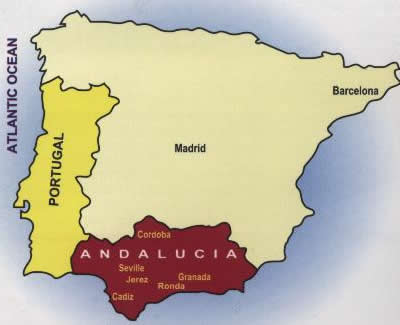
Málaga
For more than 500 years, Holy Week of Málaga has been constantly present in the religious and popular feeling of people from Málaga. The Holy Week religious celebrations in Málaga are famous countrywide. Processions start on Palm Sunday and continue until Easter Sunday with the most dramatic and solemn on Maundy Thursday and Good Friday. Images from the Passion on huge ornate "tronos" (floats or thrones) some weighing more than 5.000 kilos and carried by more than 250 members of Nuestra Señora de la Esperanza, shape the processions that go through the streets with penitents dressed in long purple robes, often with pointed hats, followed by women in black carrying candles. Drums and trumpets play solemn music and occasionally someone spontaneously sings a mournful saeta dedicated to the floats as it makes its way slowly round the streets.
The Baroque taste of the religious brotherhoods and associations and the great amount of processional materials that they have been accumulating for centuries result in a street stage of exuberant art, full of color and majesty. Although many brotherhoods have been affected by the burning churches of 1931 and an important part of their heritage were destroyed as the trousseau, imagery, and others during the Spanish Civil War, in the years following it revival was slow but these recovered with much greater numbers. Also in the 1970s Cofradías nuevas began to be formed in the city, and some old brotherhoods, which were forgotten, are reorganized by young people as: Salud, Descendimiento, Monte Calvario and many more others to adapt to the changing times.
Every year, the Passion Week in Málaga takes out to the streets a real festival perceptible by the five senses: processional thrones carrying images that sway all along the entire route, thousands of penitents lighting and giving colour with their candles and robes, processional marches, as well as aromas of incense and flowers filling the air as the processions pass by and thousands of people crowded to see and applaud their favorite tronos.
Holy Week in Málaga is very different from that celebrated in other Andalusian or Spanish places, and those who go to Málaga for the first time will be surprised, as the Passion Week there is not lived with meditation and silence, but it is full of happiness, noise, cheer, spontaneous saetas (flamenco verses sung at the processions) and applause as the images pass by.
Some tronos (floats) of Holy Week of Málaga are so huge that they must be housed in other places different from the churches, as they are taller than the entrance doors: real walking chapels of over 5,000 kilos carried by dozens of bearers. There are also military parades playing processional marches or singing their anthems along the route. All of this does not imply a lack of religiosity (nor the opposite though, since not few of the participants consider themselves lapsed catholics), but it is just the particular way that many people from Málaga live their faith, folkloric gustoes and/or feelings during the Holy Week. One of these military celebrations is that of the Spanish Legion, which parades the image of Christ of the Good Death together with the Legion's own military band and Honor guard on Maundy Thursday, very pouplar among tourists, locals, and military veterans.
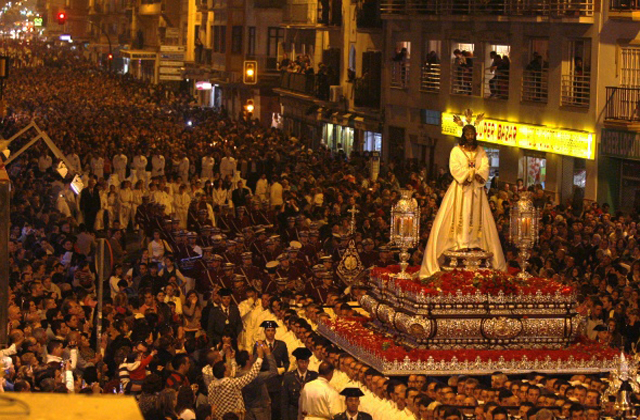
Seville
Seville arguably holds some of the most elaborate processions for Holy Week. The tradition dates from Counter Reformation times, or even earlier. The "Semana Santa de Sevilla" is notable for featuring the procession of "pasos", lifelike painted wooden sculptures of individual scenes of the events that happened between Jesus' entry in Jerusalem and his burial, or images of the Virgin Mary showing restained grief for the torture and killing of her son. Some of the images are artistic masterworks of great antiquity. These "pasos" (which usually weigh over a metric ton) are physically carried on the neck of costaleros (literally "sack men", for their distinctive -and functional- headdress). The "costaleros" (from 24 to 48) are hidden inside the platform of the "paso", so it seems to walk alone. Historically dock workers were hired to carry the "pasos". From 1973 onward, that task has been universally taken over by the members of the confraternities who organize each procession.
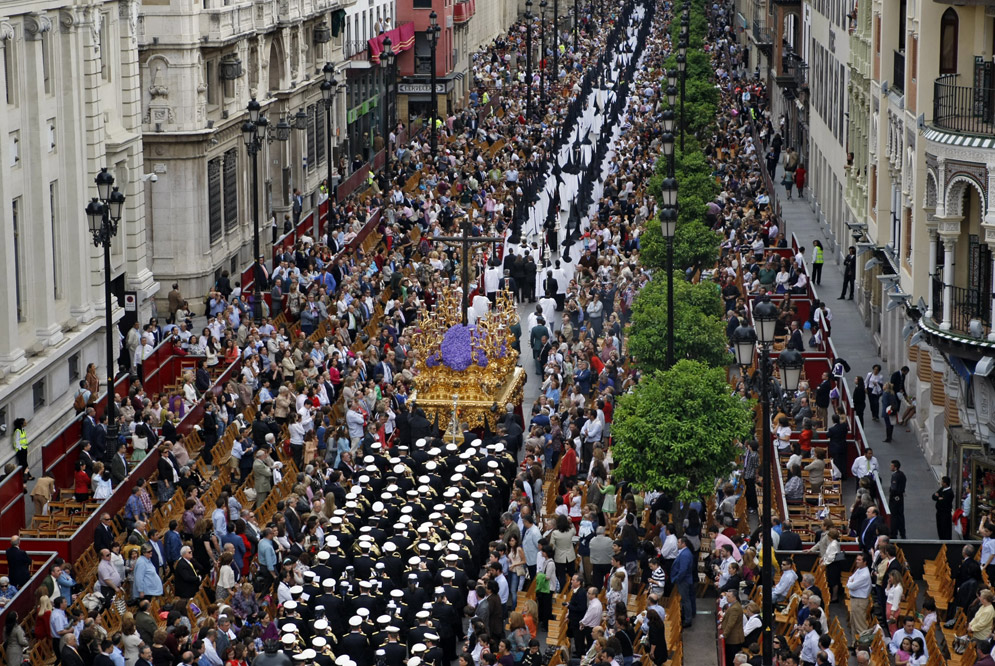
Holy Week in Galicia
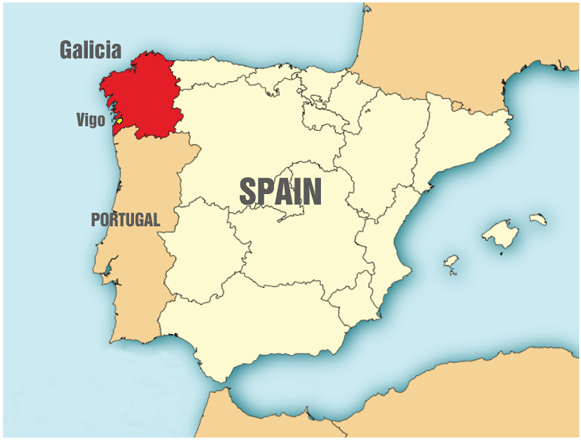
Viveiro
Holy Week in Viveiro is one of the best known religious events within Galicia. As a reflection of its importance, is also considered as a Fiesta of National Tourist Interest of Spain since 1988.
This week features the procession of pasos, floats of lifelike wooden sculptures of individual scenes of the events of the Passion, or images of the Virgin Mary showing restrained grief for the torture and killing of her son. Some of the sculptures are of great antiquity and are considered artistic masterpieces, as well as being culturally and spiritually important to the local Catholic population.
During Holy Week, the city is crowded with residents and visitors, drawn by the spectacle and atmosphere. The impact is particularly strong for the Catholic community. The processions are organised by hermandades and cofradías, religious brotherhoods. During the processions, members precede the pasos, dressed in penitential robes. They may also be accompanied by brass bands.
The processions work along a designated route from their home churches and chapels, usually via a central viewing area and back. As of 2011, a total of 15 processions are scheduled for the week, from the previous Friday to Palm Sunday through to Easter Sunday morning.
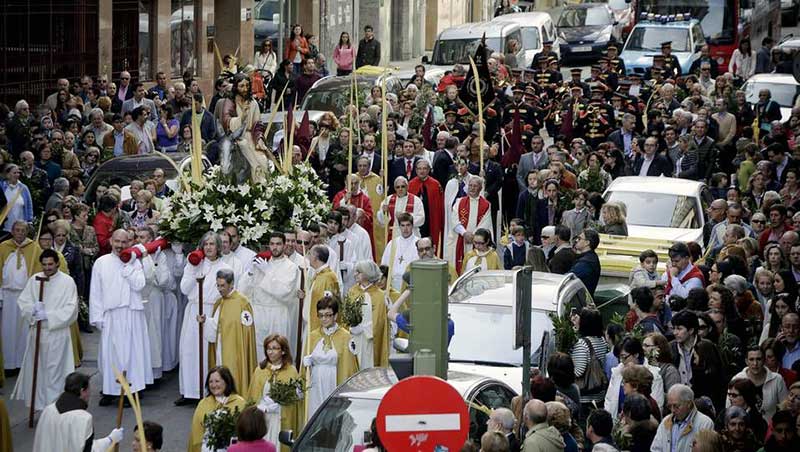
Resources:
http://en.wikipedia.org/wiki/Holy_Week_in_Spain